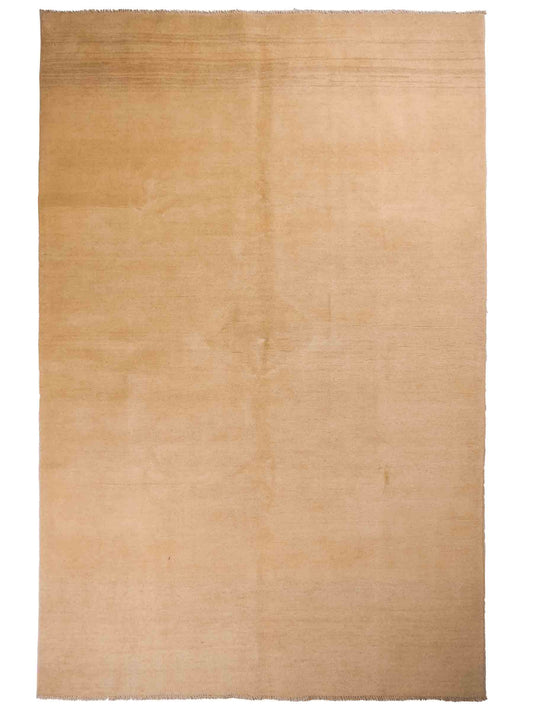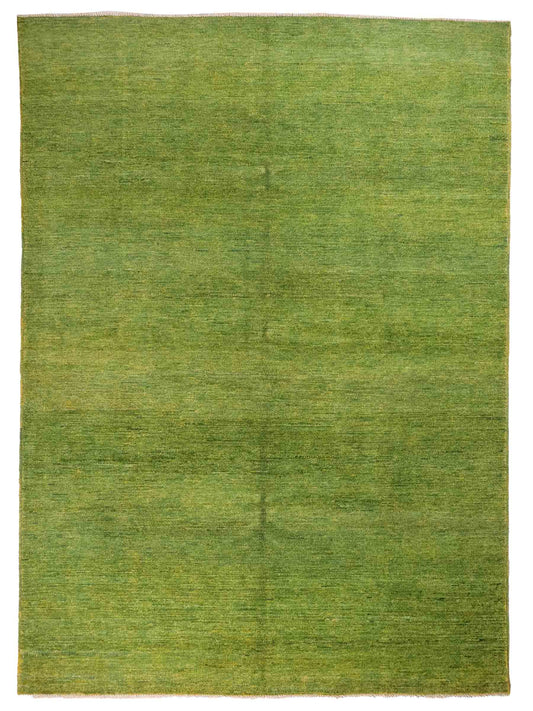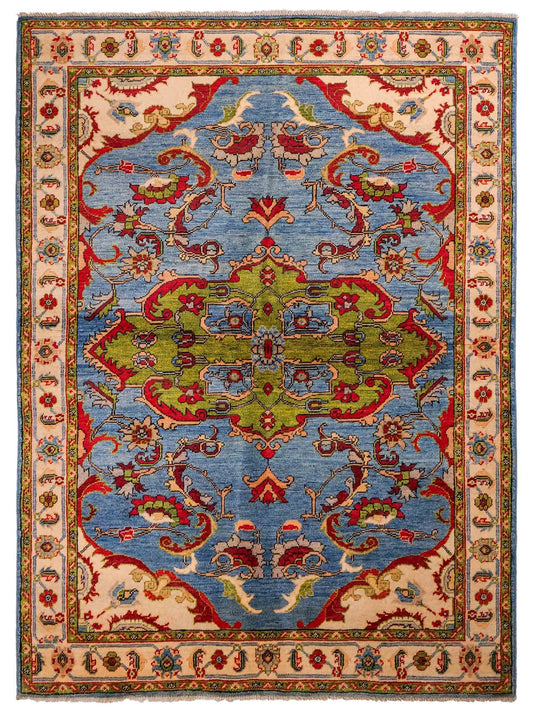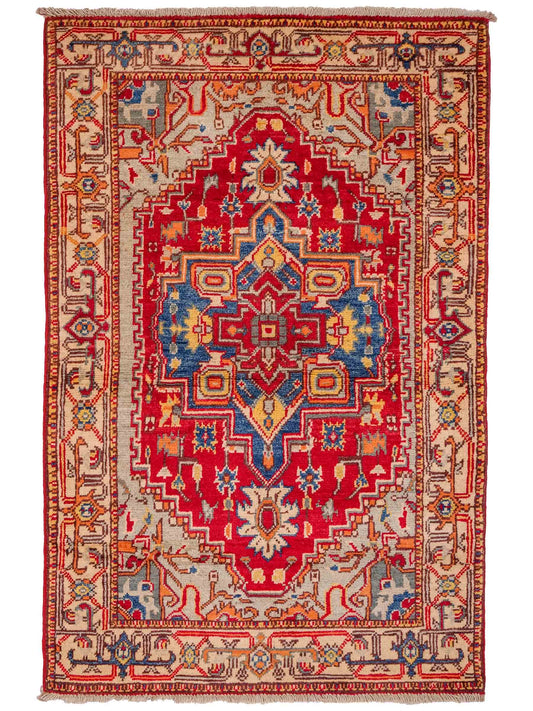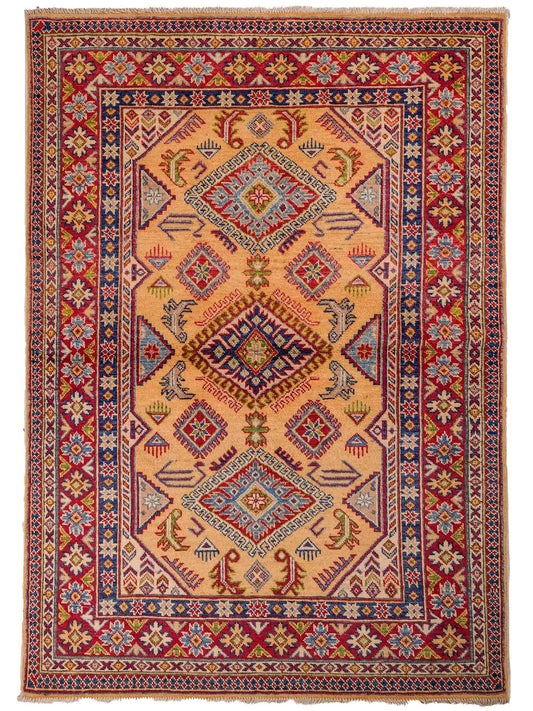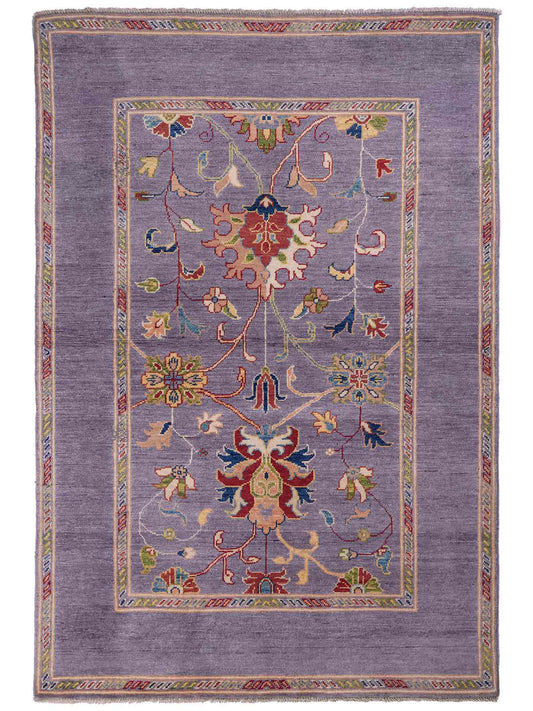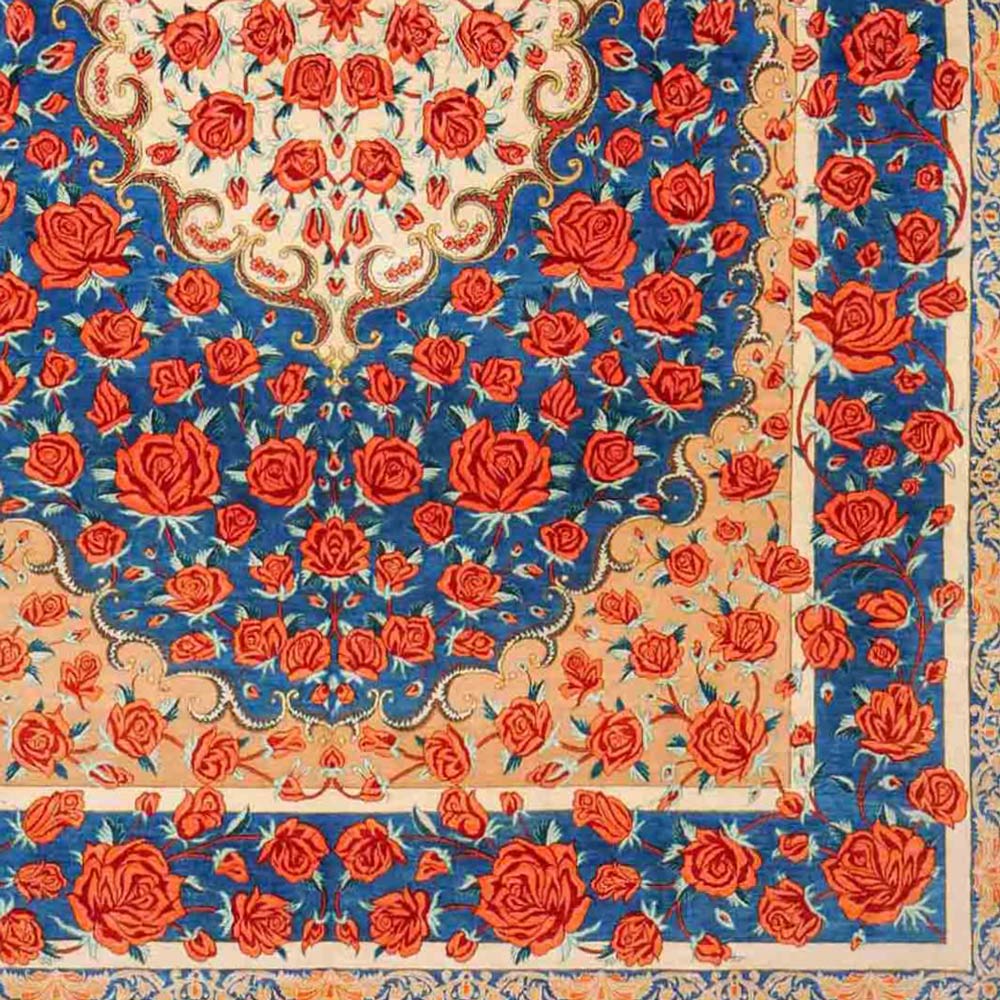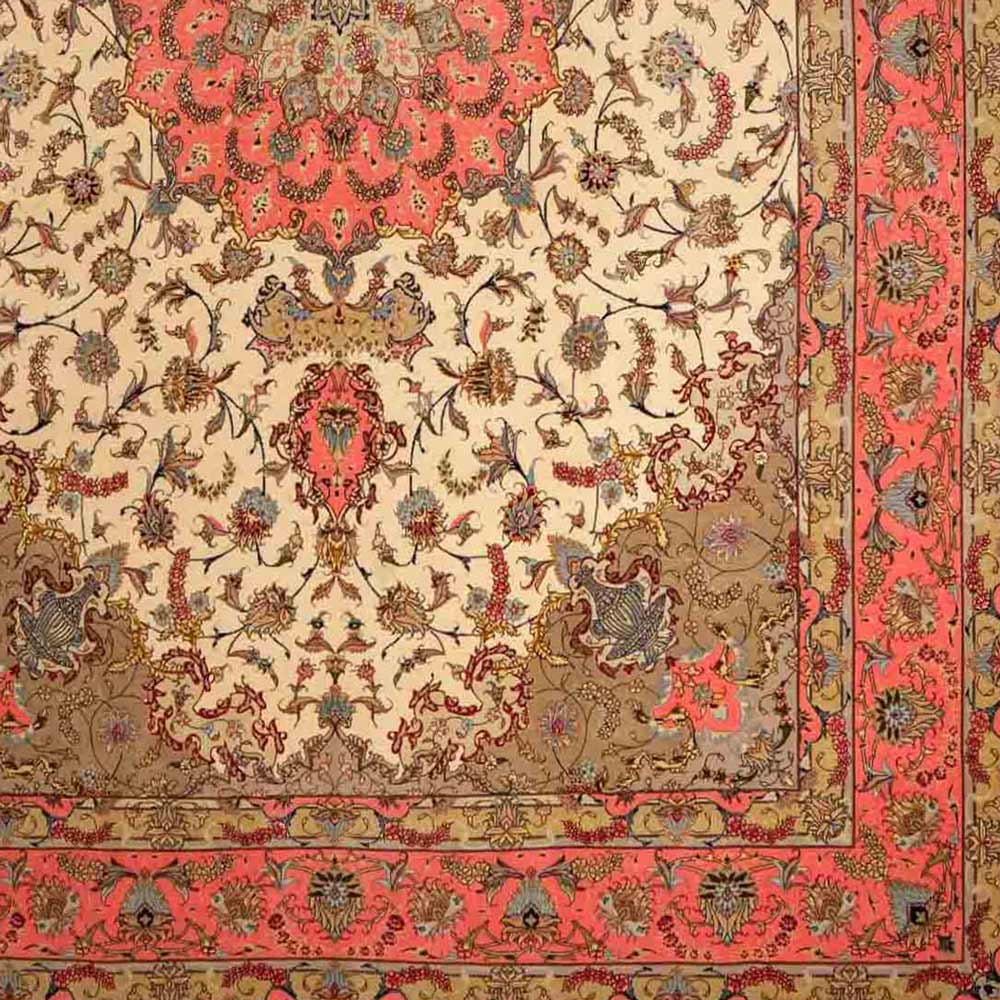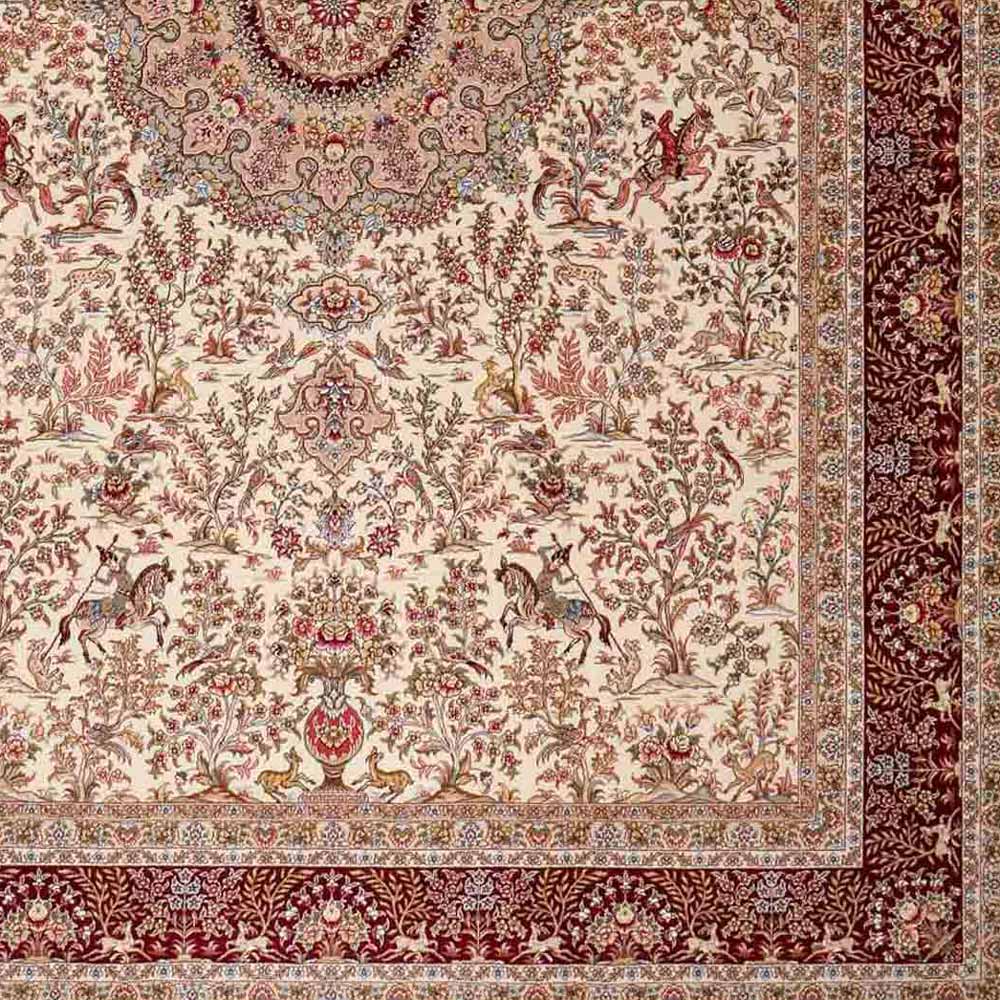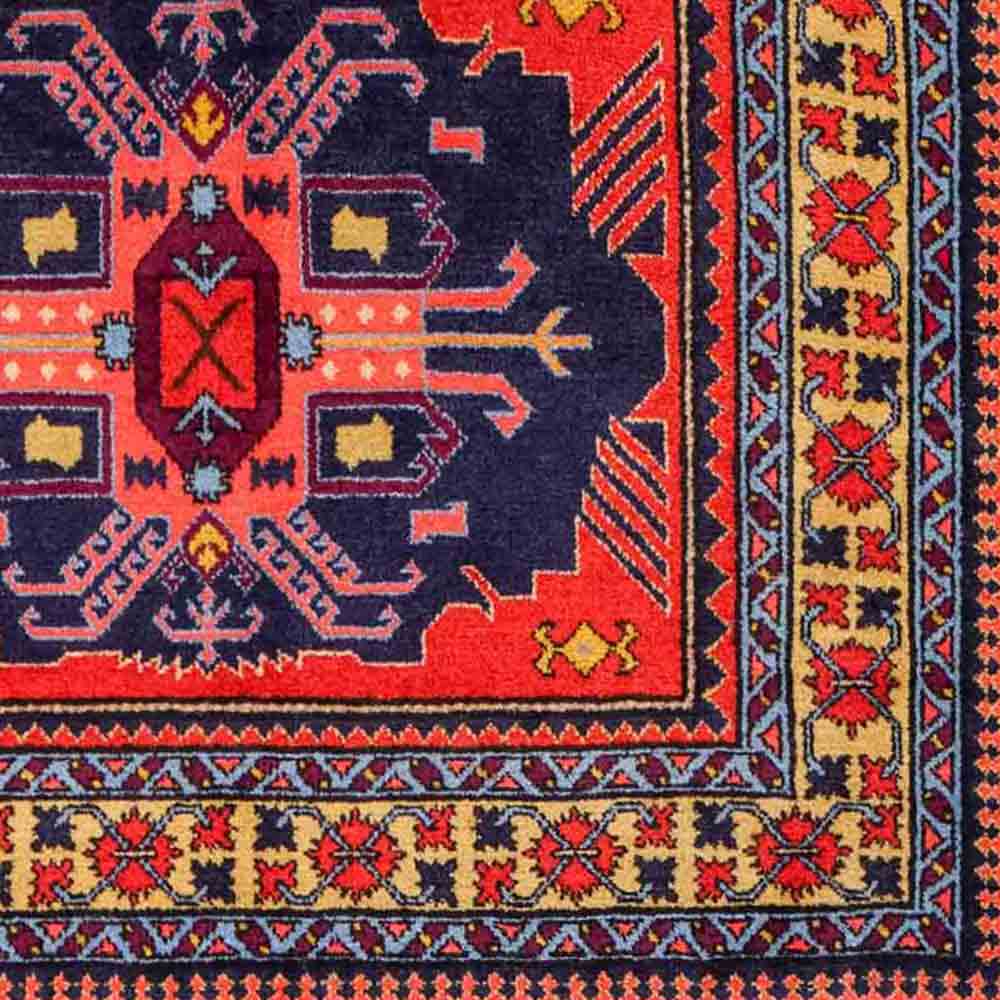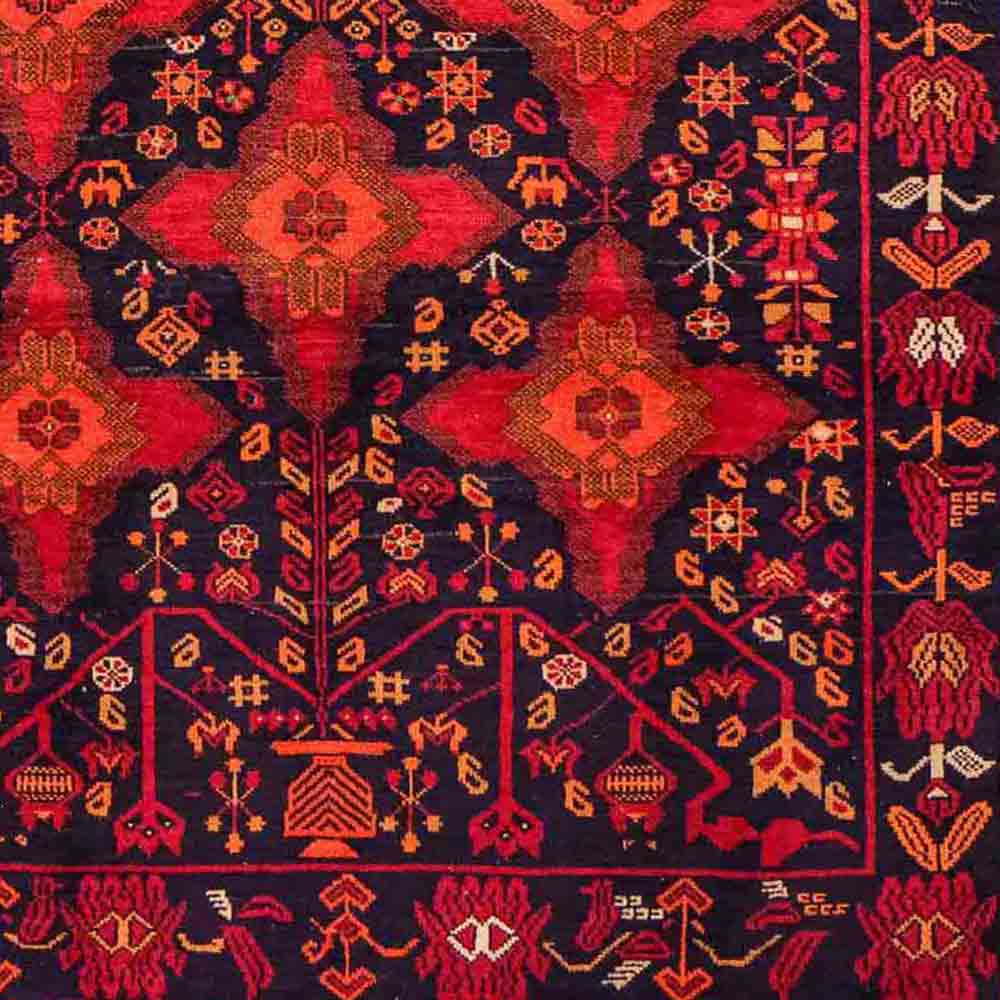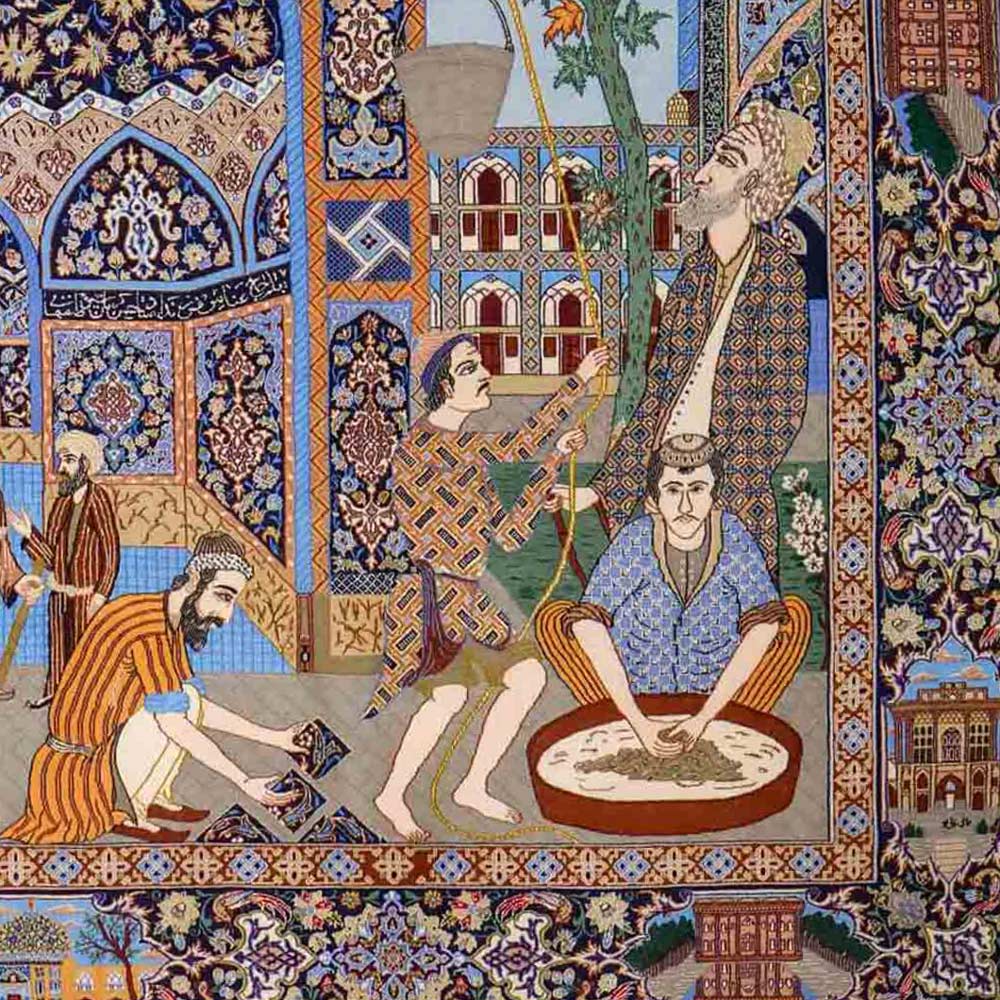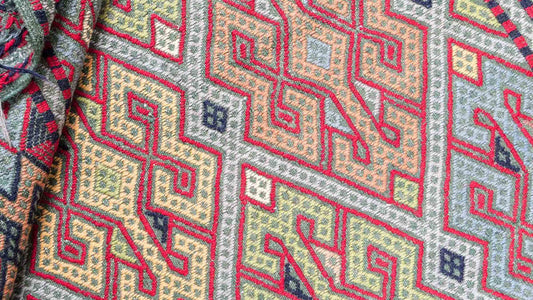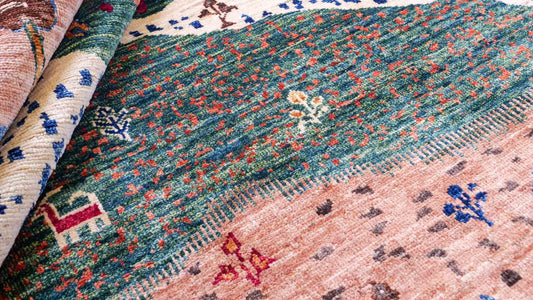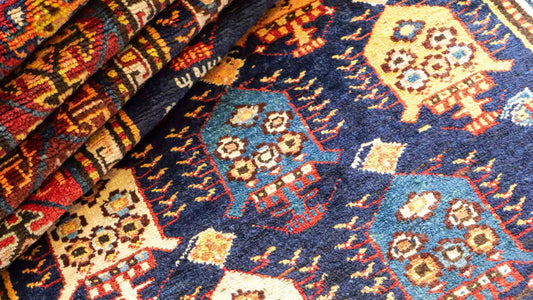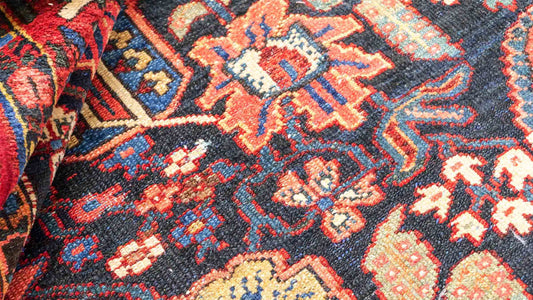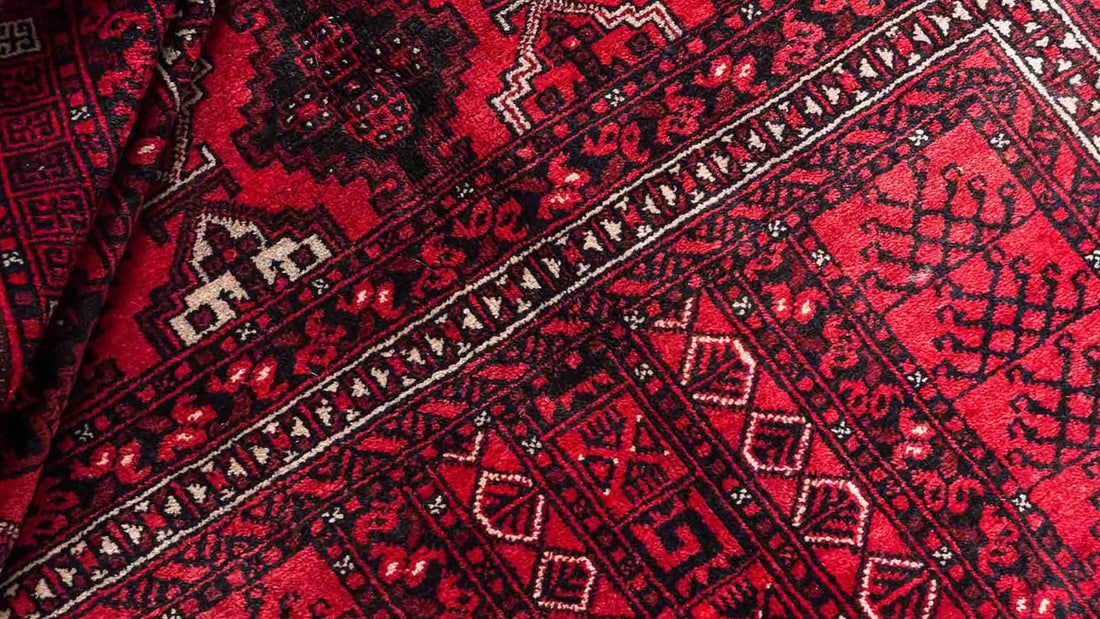
Afghan
Daniel KhademiAfghan rugs are among the most exquisite examples of Central Asian textile art. They embody vibrant traditions, cultural richness, and an unmistakable diversity of patterns and colors. In this article, you will learn everything you need to know about genuine Afghan rugs—ranging from their origins to modern interior styling and pairing ideas.
Afghan Rugs: The Essential Facts at a Glance
- Origin: Afghanistan; hand-knotted across various regions from Herat to Kabul, from nomadic tribes to rural communities
- History: Millennia-old knotting tradition—recognized for its quality and significance in international markets
- Material: High-quality sheep's wool, sometimes goat wool; natural dyes imported from plants, roots, and minerals
- Design: Geometric, floral, tribal motifs, regional styles, expressive color schemes
- Knotting: Hand-knotted, usually 100,000–300,000 knots/m², highly detailed and durable
- Character: Rugged, authentic, intricate; each piece a unique cultural artifact
- Care: Robust and long-lasting with proper maintenance; can be family heirlooms for decades
- Value: Collectible, prestigious heritage piece & long-term investment
Discover Afghan Rugs in our shop or request a free consultation now!
Origins, History & Cultural Significance of Afghan Rugs
The roots of Afghan rug weaving go back thousands of years. High-quality knotted carpets were already being produced in Afghanistan in the third millennium BC, serving as part of local and international trade networks for centuries. To this day, the country's geographical diversity—from the fertile valleys of the north to the vast steppes—and the way of life of nomads and villagers influence the selection, dyeing techniques, and design of Afghan rugs.
Afghan rug weaving combines centuries-old knowledge with a spirit of innovation: each generation has contributed its own patterns, colors, and techniques to the tradition. As a result, Afghan carpets not only reflect the heritage of nomads and merchants but also the specific region, family, or even the history of entire tribes. Today, they are highly sought after worldwide and are regarded as symbols of Afghan identity and pride.
Importance in Society and the Economy
Afghan rugs are not only works of art; they are an important part of Afghan culture and the economy. For many families, rug making is a vital source of income, providing both livelihood and a sense of cultural identity. The craft carries a deep social significance, as it connects generations of weavers and their techniques. Moreover, numerous organizations and NGOs support the training of young artisans to ensure that this tradition is preserved for the future.
Role of Afghan Rugs in Art and Literature
Afghan rugs also hold a significant place in Afghan art and literature. They frequently appear in poems, stories, and visual artworks that celebrate the beauty and importance of this craft. This cultural relevance ensures that the rugs are regarded not only as decorative elements but also as meaningful expressions of Afghan identity.
Manufacturing & Sustainability
Artisanal Heritage: Afghan Rugs
The process of making an Afghan rug begins with the careful selection of wool: it typically comes from local sheep and goat herds and is characterized by its natural durability. The wool is gently washed, hand-spun, and then dyed with natural colors derived from plants, roots, or minerals—resulting in the vibrant yet earthy tones that are typical of Afghanistan.
Various knotting techniques are used depending on the region. The knot density usually ranges between 100,000 and 300,000 knots per square meter, giving each rug strength and exceptional durability. The pattern—often inspired by geometric, floral, or tribal motifs—is executed precisely with a high level of craftsmanship.
After completion, the rug is sheared to the appropriate pile height, traditionally washed multiple times, and often dried in the sun. Edges and fringes are carefully finished by hand.
A Commitment to Environmental & Cultural Preservation
The production of Afghan rugs is environmentally friendly and sustainable. They are made entirely by hand, without mechanical aid, using natural dyes and locally sourced raw materials. Many workshops ensure fair wages for artisans and support community development. Purchasing an Afghan rug not only nurtures traditional skills but also promotes the preservation of cultural heritage. Learn more about sustainability here: *How Sustainable Are Hand-Knotted Rugs?*
Designs, Patterns & Colors of Afghan Rugs
Afghan rugs are famed for their wide variety of intricate patterns: from geometric and floral motifs to complex, storytelling compositions that reflect regional traditions. The color palettes are equally diverse, including earthy tones, vibrant reds, lush greens, and deep blues. Regional styles further distinguish these rugs: for example, Herat rugs often display lighter backgrounds with detailed floral patterns, whereas Kabul rugs tend to feature darker hues and more geometric designs. This regional diversity contributes enormously to the fascination and appeal of Afghan carpets, making each piece a unique work of art.
Design Ideas: The Perfect Rug for Your Interior
Afghan rugs are incredibly versatile. They serve well as statement pieces in living rooms, add warmth and character in dining areas, or create cozy atmosphere in bedrooms. They blend seamlessly with traditional, rustic, ethnic, and modern décor styles. Pairing these rugs with wooden furniture, natural textiles, or leather accents emphasizes their authentic charm. Whether as a central focus or layered with other textiles, Afghan rugs bring color, texture, and cultural richness to any space.
Oriental Rugs Compared: Afghan, Arijana & Ziegler
| Criteria | Afghan | Arijana | Ziegler |
| Origin | Afghanistan | Afghanistan | Original Iran (Arak), now mainly Afghanistan, Pakistan |
| Material | Wool with cotton warp | Wool with cotton warp | Wool with cotton warp |
| Knot Density | 100,000–300,000 knots/m² | 120,000–350,000 knots/m² | 200,000–400,000 knots/m² |
| Design/Pattern | Floral/geometric, tribal, figural & classic, Göl | Floral/geometric motifs, contemporary, classic & modern | Floral/geometric, medallions, allover, antique look |
| Colors | Earth tones, red, blue | Multicolored, beige, cream, green, red, earth & neutral hues | Beige, sand, red, pastels, greige, “washed” |
| Character | Bold, tribal, expressive | Modern-oriental, artistic, playful | Elegant, vintage, timeless |
| Distinctive Features | Nomadic tradition, symbolism | Artistic, contemporary styles | Antique & vintage finish |
| Price Level | Entry to mid-range | Mid to high | Mid to high |
Checklist: How to Identify Authentic Afghan Rugs
- Proof of origin and/or authenticity certificate ✔
- High-quality, resilient wool with a warm feel and rich colors ✔
- Natural dyeing using plants or minerals, no chemicals ✔
- Hand-knotted, with clearly visible knot density and pattern; not uniformly perfect ✔
- Characteristic fringes and well-finished edges; patterns and colors also visible on the back ✔
- Regional features depending on the origin: Göl motifs, tribal patterns, geometric ornaments, and more ✔
Style and Interior Ideas for Afghan Rugs
Afghan rugs are true versatile pieces: they add warm contrasts to modern, minimalist settings, serve as eye-catching color accents in neutral spaces, and emphasize a classic, oriental, or ethnographic decor style. They harmonize perfectly with materials like wood, linen, leather, and stone—whether in the living room, dining area, bedroom, or hallway. Especially as statement pieces or when layered with other rugs, Afghan carpets bring variety and character to any interior.
Care & Preservation of Afghan Rugs
How to Keep Your Afghan Beautiful for Generations:
- Vacuum regularly, do not beat
- Blot stains immediately with lukewarm water & a cloth
- Avoid direct sunlight
- Professional cleaning every 1–2 years recommended
- For more detailed advice, visit our blog post: *How to Care for Hand-Knotted Rugs*
Value & Investment: A Unique Piece for Life
Due to their countless designs and unique flair, Afghan rugs enjoy great international popularity. Extremely fine, well-preserved antique pieces with proven provenance and authenticity are highly sought after in the collector’s market, retain their value, and may even appreciate in worth over time.
► For in-depth advice, tips & tricks, see our blog post: *Are Hand-Knotted Rugs a Good Investment?*
Request your personal style and buying consultation for Afghan rugs now!
FAQ – Frequently Asked Questions about Arijana Rugs
What makes Afghan rugs so special?
► Ancient weaving traditions, powerful motifs, vivid colors, and regional variations make Afghan rugs iconic. Each piece reflects the cultural identity and artistic mastery of its weavers.
How can I recognize an authentic Afghan rug?
► Look for proof of provenance, natural wool, subtle dyeing, hand-knotting with irregularities, and regional motifs. At JUPITER Intl, every hand-crafted carpet comes with a Certificate of Authenticity.
How do I care for my Afghan rug?
► Vacuum gently, treat stains immediately with a damp cloth, air regularly, and have professionally cleaned every 1–2 years. For more detailed advice, visit our blog post: *How to Care for Hand-Knotted Rugs*
Are Afghan rugs durable and practical for everyday living?
► Yes, they are considered especially resilient, easy to maintain, and are often passed down through generations.
Are Afghan rugs suitable as an investment?
► Very finely hand-knotted, antique, or particularly unique pieces can be highly sought after in the collector’s market. Read more in our blog post: *Are Hand-Knotted Rugs a Good Investment?*
Conclusion: A Cultural Heritage in Your Home
Afghan rugs are much more than decorative carpets—they are symbols of history, craftsmanship, and traditional culture. Their unique patterns, natural materials, and timeless appeal bring warmth and authenticity into every living space. Choosing an Afghan rug means investing in a piece of living culture and high artisanal quality. Explore our collection today and find your personal masterpiece!
Request your personal consultation or explore our current Afghan Collection now!
Related blogs & blog posts you might also be interested in:
→ Design Classics, Countries of Origin, Carpet Materials, Carpet Guide

